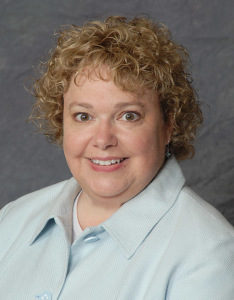The idea that technical skills define biomed performance is baked into the job title, whether it’s biomedical equipment technician or healthcare technology management professional. But in recent years, as the field has struggled to move out of the basement and gain more influence and respect, the importance of people skills has become increasingly clear. And at the heart of people skills, says Barbara Christe, PhD, of Indiana University-Purdue University Indianapolis (IUPUI), is empathy.
That is the subject of her June 7 presentation at the AAMI annual conference, “The Secret Sauce Is Professional Empathy: Measuring and Improving the Vital Workplace Characteristic.” In a pre-conference interview with 24×7, Christe explained the genesis of her presentation. “We assess professionalism for our students with an 11-point rubric to help students be ready for their internships,” she said. “Over the last 3 years or so, we are hearing from our clinical mentors that some students are not displaying some of the attributes of professionalism that we look for.” Using the rubric as a tool, she said, “we found that students were not displaying empathy.” This was particularly true of international students, she noted.
Other healthcare professions, she found, “have been analyzing and training students in empathy qualities for quite a while.” She then wrote a grant proposal to examine and assess her students’ empathy, using a standardized questionnaire, to see if she was correct that international students tended to show less empathy. The ultimate goal, she said, was to find a “a quantifiable tool” that can be used to do “some training to try to promote professional empathy.”
Christe emphasized that the focus should be on professional, rather than emotional, empathy, and reflect what you should show rather than what you truly feel. “The fundamental difference between professional empathy and emotional empathy is feelings,” she explained. “Professional empathy is associated with behaviors, while true emotional empathy is a feeling or category of feelings. Displaying professional empathy involves understandings, and communication of those understandings through behaviors. Many empathy training techniques involve theater and the tools of acting to demonstrate professional empathy.”
Because most biomeds tend to view the world from a technical perspective, Christe expects some resistance to learning both to display professional empathy and to teach it to their staffs. “The literature spends a lot of time discussing how empathy is an art, not a technical skill,” she noted. “But we can find relative consensus among long-term HTM professionals that this rapport with clinicians is critical. Customer service is relatively accepted as an important skill—and professional empathy is the secret sauce in customer service.”
The challenge to incorporating empathy into customer service training and review is that, as an art rather than technical skill, it is harder to measure, Christe said. In assessing customer service, for instance, timeliness is an easily quantified measure. But empathy “is truly a nebulous thing.”
In her study, she has found that a 16-question survey tool, the Toronto Empathy Questionnaire, can offer valuable insight into empathy skills. It offers “a quantifiable tool so that you can put a number with empathy—because we like numbers—and make it less art and more science.”
At her presentation, Christe will talk in detail about how to use the questionnaire “both to assess your own level of empathy, and then perhaps try some new, purposeful techniques” to demonstrate increased empathy in your interactions with customers. For technically oriented people, professional empathy may not come naturally. But it turns out that with the right tools, they can acquire this critical skill.
The session will take place at the AAMI Conference & Expo on Sunday, June 7, from 2:00 to 3:00 pm. For more information on the conference, visit the AAMI Conference website.
John Bethune is editorial director of 24×7. Contact him at [email protected].






Very inspiring and educational material!
Great thanks to the presenter